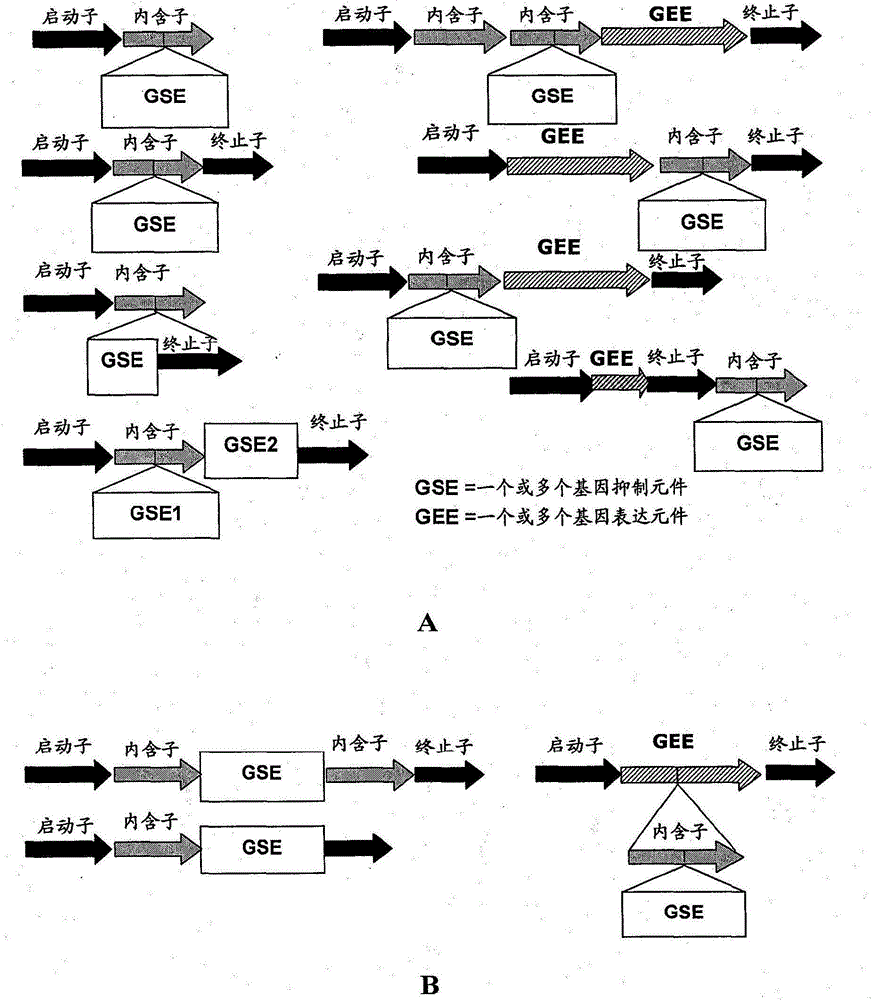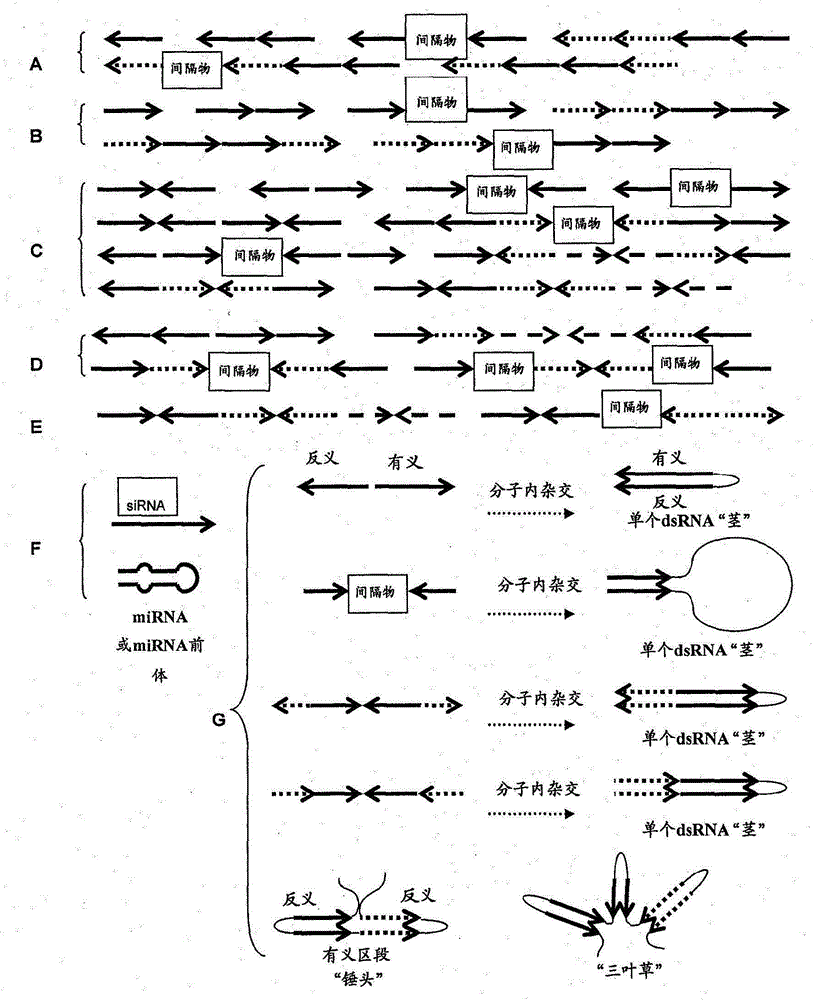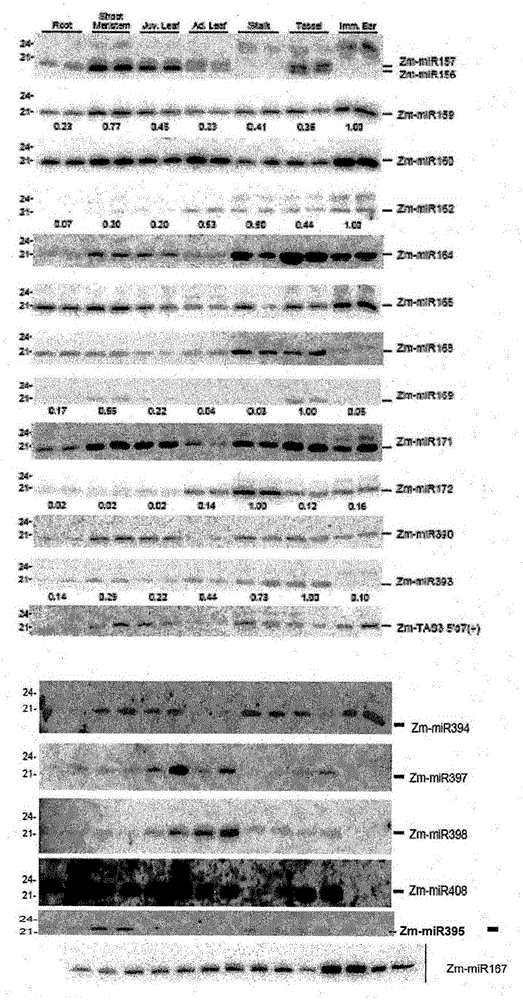Methods for producing hybrid seed
A technology for transgenic plants and male sterility, applied in the directions of biochemical equipment and methods, horticultural methods, and botanical equipment and methods, and can solve the problems of chlorosis, insufficient phytotoxic side effects of gametes, and no selectivity of gametes.
- Summary
- Abstract
- Description
- Claims
- Application Information
AI Technical Summary
Problems solved by technology
Method used
Image
Examples
Embodiment 1
[0199] This example sets forth non-limiting examples of recombinant DNA constructs useful for the suppression of at least one target gene; these constructs, when designed to contain miRNA recognition sites, allow expression of gene suppression elements in specific tissues.
[0200] figure 1 A schematically illustrates a non-limiting example of a recombinant DNA construct of the invention useful for suppressing at least one target gene. These constructs comprise at least one first gene suppression element ("GSE" or "GSE1") for the suppression of at least one first target gene, wherein the first gene suppression element is embedded in a region of non-protein-coding DNA. in the introns on either or both sides. These constructs use introns (in many embodiments, preferably those derived from the 5' sequence). The construct may optionally comprise at least one second gene suppression element ("GSE2") for suppressing at least one second target gene, at least one second gene suppre...
Embodiment 2
[0205] This example describes a non-limiting method for determining potentially useful miRNA recognition sites by measuring miRNA expression patterns. Information on the spatial or temporal distribution of expression of a given miRNA can be used, for example, to design recombinant constructs to be expressed in a spatially or temporally specific manner. This example discloses expression patterns of mature miRNAs in maize and provides sequences of recognition sites for these miRNAs suitable for inclusion in recombinant DNA constructs useful in maize and other plants.
[0206] Total RNA was isolated from LH244 maize plants using Trizol (Invitrogen, Carlsbad, CA). Seven developmental stages were used, including root and branch meristems from germinated seedlings, juvenile (V1-V2) and adult leaves (V7-V8), stalk internodes, pre-shedding ears, and immature (approximately 1") ears. 5 μg of total RNA was resolved on 17% PAGE-urea as described in Allen et al. (2004) Nat. Genet., 36: 1...
Embodiment 3
[0212] This non-limiting example describes recombinant DNA constructs of the invention that can be used to inhibit target expression in specific cells of or derived from multicellular eukaryotes, such as plant cells or animal cells. RNA expressions, and methods of their use. The construct comprises a promoter operably linked to DNA transcribed into RNA comprising at least one exogenous miRNA recognition site that is recognized by a mature miRNA expressed in a particular cell of a multicellular eukaryote, and A target RNA that is suppressed in a specific cell, wherein the target RNA is expressed in a cell of a cell-unspecific multicellular eukaryote.
[0213] Strong constitutive promoters expressed in almost all plant cells have been identified (eg CaMC35S, OsAct), but strong spatial (cell or tissue specific) and temporal specific promoters have not been fully characterized. In order to restrict target RNA or transgene expression to specific cell or tissue types in the absence...
PUM
 Login to View More
Login to View More Abstract
Description
Claims
Application Information
 Login to View More
Login to View More - R&D
- Intellectual Property
- Life Sciences
- Materials
- Tech Scout
- Unparalleled Data Quality
- Higher Quality Content
- 60% Fewer Hallucinations
Browse by: Latest US Patents, China's latest patents, Technical Efficacy Thesaurus, Application Domain, Technology Topic, Popular Technical Reports.
© 2025 PatSnap. All rights reserved.Legal|Privacy policy|Modern Slavery Act Transparency Statement|Sitemap|About US| Contact US: help@patsnap.com



